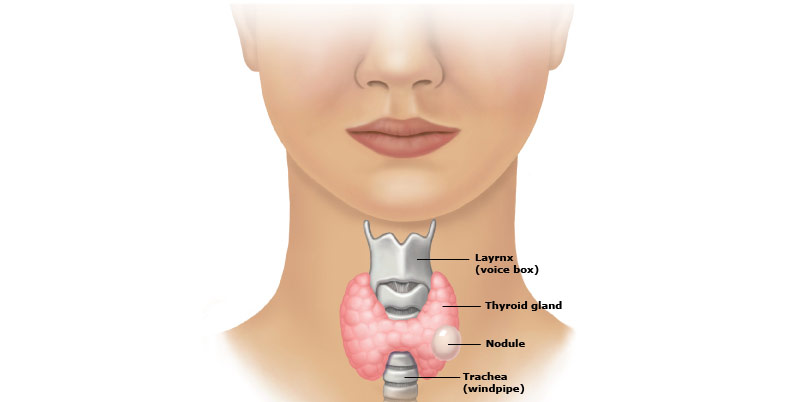About thyroid Nodules
Around 5% of the population worldwide have a goitre or benign thyroid lump or enlargement. Up to 50% of the elderly population have a solitary thyroid nodule. Most thyroid nodules are benign, but some may produce excess thyroid hormone and other thyroid lumps may be cancerous.
Those people who have received radiation treatment to the head and neck regions for conditions such as acne, thymus enlargement, recurrent tonsillitis, chronic ear infections and birthmarks are at a greater risk for thyroid nodules and thyroid cancer. The initial evaluation for patients with thyroid nodules should include a medical history, physical examination and thyroid function tests. Toxic (hyperfunctioning) thyroid nodules are rarely malignant and require a thyroid radionuclide scan for assessment.
Thyroid nodules in patients with normal thyroid function require fine needle biopsy which provides specific information about the nature of the nodule. Patients with atypical fine needle biopsy have up to a 20% risk of malignancy and require appropriate thyroid surgery. The key issue for patients with thyroid lumps is whether surgery is required to remove the nodule for accurate diagnosis by pathology.
Diagnosis of thyroid cancer is aided by ultrasonography and thyroid radionucleotide scanning. The best way to diagnose thyroid cancer is with a tissue diagnosis. This is made by fine needle aspiration (FNA). Cautions with FNA relate to possible incorrect diagnosis or non-diagnostic interpretations from the aspirate. When a thyroid biopsy is non-diagnostic, excision of the whole nodule by hemithyroidectomy with diagnosis by formal pathology assessment is usually needed.
If you have any questions about thyroid lumps or thyroid nodules contact your local doctor, who will arrange for you to see a thyroid surgeon.

